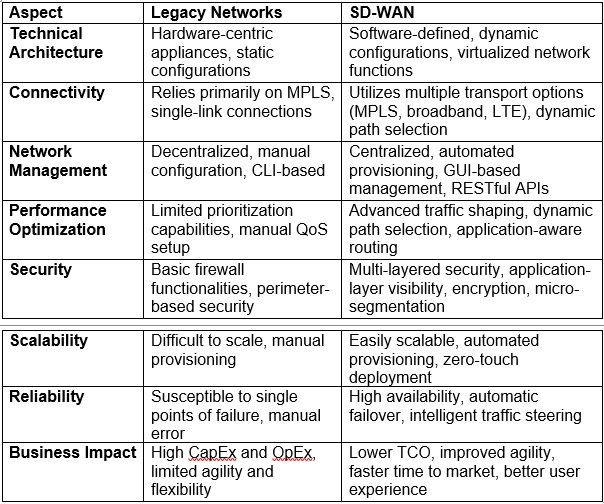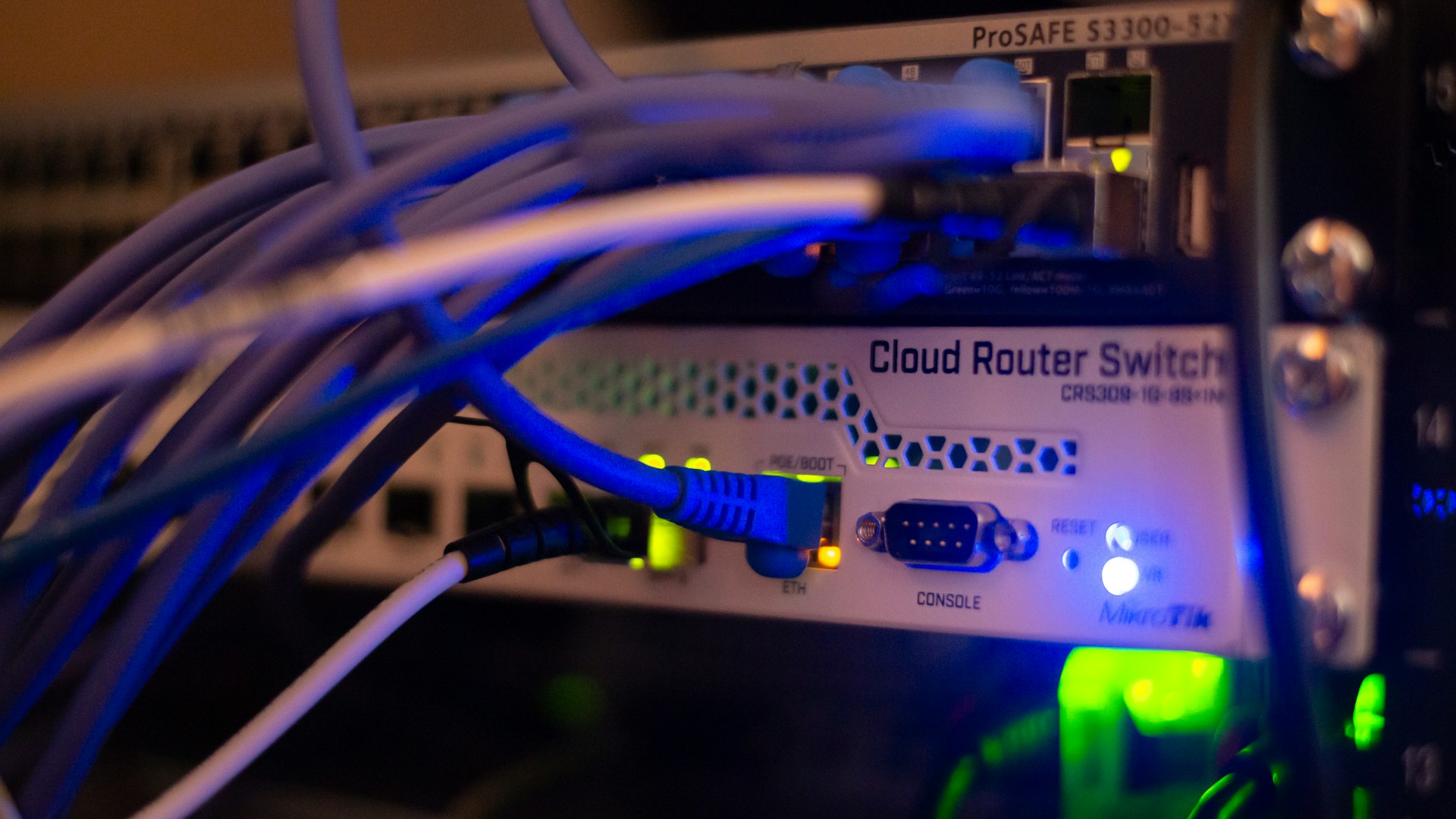5 Key Reasons a CTO Should Think about SD-WAN
-
March 22, 2024
-
6 min read

The BFSI sector in India is booming- in FY22, its contribution to the country’s GDP rose to 12%. A CAGR of 14%- much higher than the global average- the growth is expected to continue this year, with India’s position as a key player cemented by favorable regional and domestic policies.
BFSI is undergoing rapid expansion to meet the needs of one of the world’s largest digital-first economies. The industry’s growth momentum is underpinned by digital transformation (DX). It is now imperative for network leaders to stay ahead of the top trends in BFSI-
- 91% of BFSI enterprises have started shifting services and applications to the cloud and utilizing hybrid and multi-cloud services for flexibility and economies of scale.
- Moving away from siloed systems and integrating disparate network components into a unified infrastructure for smooth communication across all business units and locations.
- With the Indian cybersecurity market valued at $6 billion in 2023, heavy investments in security measures emerge as a clear priority for safeguarding sensitive customer data.
Legacy WAN architecture cannot keep up with such ambitious growth plans. Their hardware-centric nature and reliance on static configurations make them ill-equipped to support the surging volume of digital transactions, applications, and distributed workforces across multiple locations.
In such a case, Software-Distributed WAN becomes a beneficial solution for businesses to take advantage of faster deployment times, centralised network management, and optimised cloud connectivity. About 27% of enterprises have adopted SD-WAN in India, with a large concentration in BFSI, retail, and IT segments. Early adopters also indicate expansion plans to more locations and upgrades in their existing deployments.
Legacy Networks vs SD-WAN
Scaling for Business Expansion
Organizations have relied on WANs for decades to establish connectivity with their branch offices and ensure uninterrupted communication with remote locations.
Unlike traditional router-centric WANs, SD-WAN can prioritize and route traffic based on specific applications, which may be hosted in various environments such as on-premises virtual data centres (VDCs), private or public clouds, Infrastructure-as-a-Service (IaaS) platforms, and Software-as-a-Service (SaaS) platforms like Microsoft 365, Dropbox, Workday, and Salesforce.com.
Legacy WAN depends on clunky hardware that requires complex box-by-box configurations and much manual intervention.
However, with the advent of SD-WAN, enterprises are now equipped to transcend these limitations.
- SD-WAN’s biggest strength is its capacity to use virtualization and software services to develop a modern network that delivers cost-effective, simpler, and faster business connectivity to support digital transformation. This ‘always-on and ready’ network posture enhances operational efficiency and agility.
- The plug-and-play nature of SD-WAN significantly reduces the complexities associated with network expansion.
Simply put, as soon as new sites are added to the network, they are configured and ready to go. This cuts back on the 30-40 day period that is traditionally required to set up a new network, slashing deployment time to mere hours. - Enterprises can extend their WAN to new sites through automated provisioning and configuration, eliminating manual intervention and costly on-site visits. Per Deloitte, network leaders can reduce the TCO of the WAN by 30% over 5 years.
Modernising Network Infrastructure
With 45% of IT managers reporting application underperformance as a key issue, a network solution’s top priority must be adding value to the user’s experience.
Here, SD-WAN trades the clunkiness of traditional networks for agility in deploying new services, scaling bandwidth, and optimising application performance.
- Integrating Multiple Links: SD-WAN converts disjointed network links- like broadband, MPLS, and LTE- into a cohesive network infrastructure. This flexibility allows businesses to use lower-cost broadband links intelligently for less-critical sites, freeing up valuable bandwidth resources.
- Prioritizing Data Traffic: Based on metrics like latency, packet loss, and jitter, SD-WAN’s inherent dynamic routing capabilities ensure mission-critical applications- like real-time communication- receive the necessary bandwidth and QoS.
Streamlining Operational Inefficiencies
In BFSI enterprises, traffic comes in from various sources-
- online banking platforms
- mobile applications
- ATM transactions
- and backend systems handling financial operations.
Ensuring the smooth flow of this traffic- an offshoot of legacy networks- burdens network engineers with time-consuming processes and inconsistencies across sites.
Correcting this requires extensive manual intervention, which can also lead to a surge in downtime.
SD-WAN’s centralised management runs on transport-agnosticism, which means administrators have visibility into the entire network structure, regardless of underlying transport technology.
This is achieved by integrating all network modes, be it broadband Internet, MPLS, Ethernet, cable, DSL, 4G/5G, or private line, helping managers achieve top performance regardless of the network provider or location of network edges.
The “single pane of glass” view helps in hybrid connectivity, which 34% of network leaders reported as crucial to their business.
Multi-Layer Security
With 53% of enterprises believing that security issues are hindering their digital journey and cloud adoption, the notion of a defined perimeter exists no more.
Enterprises want security at all layers, including network, cloud, and application.
At its core, SD-WAN introduces a multi-layered security architecture crucial for safeguarding data in a perimeter-less landscape.
- It utilises encryption protocols like IPsec and SSL/TLS to secure data in transit, forming a protective barrier around sensitive information as it moves across the network.
- Further enhancing this model is network segmentation, which minimises attack surfaces by isolating breaches to specific network segments.
These are governed by distinct access controls and mitigate the spread of security incidents.
- Moreover, SD-WAN’s continuous monitoring and real-time threat detection capabilities are a proactive defence.
Employing advanced algorithms, these systems can discern and counteract anomalous activities indicative of cyber threats.
With firewalls scrutinising application-layer traffic, SD-WAN empowers organisations to enforce security policies tailored to application signatures and user behaviours.
Increasing Cost Pressures
54% of CTOs reported a limited budget as a business challenge despite little to no curtailing of IT spending by major corporations.
It’s easy to see why- technology is seen as the most reliable means for a business’s growth, and IT budgets are often stretched thin as organizations invest in various initiatives.
Thus, any network solution must have inherent cost-saving capabilities for organizations to shift to it.
Incidentally, this is widely believed to be one of the “low-hanging fruit” SD-WAN easily achieves.
How SD-WAN slashes costs
The principle of SD-WAN’s cost-saving capability is that it can be installed as an overlay on existing infrastructure.
Thus, using commodity hardware and software-defined networking principles, SD-WAN eliminates costly proprietary hardware, resulting in substantial CapEx savings.
Additionally, SD-WAN’s inherent automation reduces labour-intensive tasks and, subsequently, OpEx.
SD-WAN can also utilise multiple transport options, including low-cost broadband internet connections, enabling organisations to select the manner of connectivity that best suits their budget and performance requirements.
The Final Word
SD-WAN is in the growth phase of the product life cycle in India. Now that it’s beyond its early adoption stage, it paves the way for future-ready architectures, crucial for BFSI organizations aiming to stay competitive.
Airtel’s integrated approach to SD-WAN further simplifies the process for customers, offering end-to-end solutions and network-as-a-service models. Network leaders would be well-positioned to benefit from adopting SD-WAN as a crucial part of their digital transformation efforts.
 Share
Share










